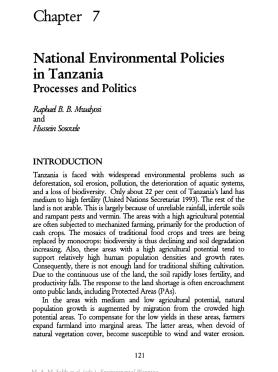Poverty Alleviation Policies in Tanzania- Progress and Challenges
Poverty Alleviation Policies in Tanzania- Progress and Challenges
Tanzania is faced with widespread environmental problems such as deforestation, soil erosion, pollution, the deterioration of aquatic systems, and a loss of biodiversity. Only about 22 per cent of Tanzania's land has mediwn to high fertility (United Nations Secretariat 1993). The rest of the land is not arable. This is largely because of unreliable rainfall, infertile soils and rampant pests and vennin. The areas with a high agricultural potential are often subjected to mechanized fanning, primarily for the production of cash crops. The mosaics of traditional food crops and trees are being replaced by monocrops: biodiversity is thus declining and soil degradation increasing. Also, these areas with a high agricultural potential tend to suppon relatively high human population densities and growth rates. Consequently, there is not enough land for traditional shifting cultivation. Due to the continuous use of the land, the soil rapidly loses fertility, and productivity falls. The response to the land shonage is often encroachment onto public lands, including Protected Areas (PAs).

